You could just probably drive a DC buzzer, which Anindo showed, with a transistor using one of your microcontroller's pins.
I have shown an example in the below schematic. Pick the R1 so that it gives enough gain to your transistor.
Since you do not want much components, you can maybe remove pull-down resistor R2 if you can get away with small problems, such as a weak and short beep on power-on, when the microcontroller's pin is floating.
Also, a fly-back diode may not be necessary, depending on the buzzer.
I have happened to pick a PIC16F616, it is an over-kill as Olin notes and I did not pay attention to that. Feel free to use your own microcontroller which you are already using in your design.



